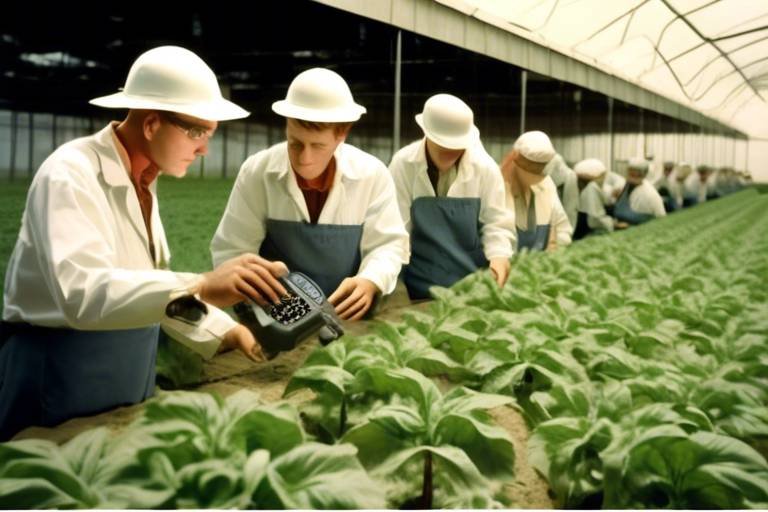How Innovations in Biotechnology are Shaping Agriculture
In today's fast-paced world, the intersection of biotechnology and agriculture is nothing short of revolutionary. As we face an increasing global population and the looming threat of climate change, the need for sustainable and efficient agricultural practices has never been more critical. Innovations in biotechnology are stepping up to the plate, offering solutions that not only enhance crop yields but also promote sustainability and improve food security. Imagine a future where farmers can grow more food using fewer resources while maintaining the health of our planet. This is not just a dream; it is becoming a reality thanks to the remarkable advancements in biotechnology.
At the heart of these innovations lies genetic engineering, a technique that allows scientists to modify the genetic makeup of crops. This process enables the creation of genetically modified organisms (GMOs) that boast improved traits, such as:
- Pest resistance: Crops can be engineered to naturally repel pests, reducing the need for harmful chemical pesticides.
- Drought tolerance: Certain crops can withstand periods of low water availability, ensuring food production even in challenging climates.
- Enhanced nutritional content: Biotechnology can increase the levels of vitamins and minerals in staple crops, combating malnutrition.
These advancements not only lead to higher yields but also contribute to a more resilient agricultural system capable of withstanding environmental challenges.
Alongside genetic engineering, we are witnessing a rise in the use of biopesticides and biofertilizers. These eco-friendly alternatives to traditional chemical pesticides and fertilizers are gaining traction among farmers who are keen on sustainable practices. By harnessing natural processes, biopesticides and biofertilizers not only protect crops but also enhance soil health. This shift towards biological solutions reduces the environmental impact of farming and promotes a healthier ecosystem.
One of the most significant achievements in biotechnology is the development of disease-resistant crops. These crops drastically minimize the need for chemical interventions, leading to healthier produce and increased agricultural productivity. For example, disease-resistant varieties of rice and corn have been successfully cultivated in regions that previously struggled with crop failures due to pathogens. This not only boosts farmers' income but also ensures that communities have access to reliable food sources.
Several case studies illustrate the transformative power of biotechnology in agriculture. In regions plagued by specific diseases, the introduction of resistant crop varieties has led to:
| Region | Crops Affected | Impact |
|---|---|---|
| Sub-Saharan Africa | Maize | Increased yields by 30%, reducing hunger and poverty. |
| Southeast Asia | Rice | Improved resistance to blight, ensuring food security. |
These examples showcase how biotechnology can enhance food security and improve the livelihoods of farmers in vulnerable regions.
As research continues to evolve, the future looks promising for even more resilient crop varieties. Scientists are exploring advanced techniques, such as CRISPR, to edit genes with precision, paving the way for crops that can adapt to climate change and emerging pest challenges. The potential for biotechnology to create a sustainable agricultural landscape is immense, and it is an exciting time for the field.
Another vital aspect of biotechnology is its ability to enhance the nutritional profiles of crops. With malnutrition affecting millions globally, biotechnological advancements are addressing this pressing issue by:
- Increasing the levels of essential vitamins and minerals in staple foods.
- Developing crops fortified with nutrients to combat specific deficiencies.
These innovations not only improve health outcomes but also contribute to the overall well-being of communities.
In addition to genetic advancements, the integration of precision agriculture technologies is transforming farming practices. By utilizing data analytics and the Internet of Things (IoT), farmers can optimize their operations based on real-time data. This data-driven approach allows for:
- More efficient use of resources, such as water and fertilizers.
- Targeted interventions that enhance crop yields.
Imagine a farmer using drones to monitor crop health from above, receiving alerts about irrigation needs, and applying fertilizers only where necessary. This level of precision not only increases productivity but also fosters sustainable practices.
Farmers today are increasingly relying on data-driven insights to make informed decisions about planting, irrigating, and harvesting. This shift leads to more efficient resource management and improved crop outcomes. By analyzing patterns and trends, farmers can adapt their strategies to changing conditions, ensuring they stay ahead in a competitive market.
The integration of biotechnology and precision agriculture significantly impacts resource management. Farmers can reduce water usage, minimize chemical applications, and improve soil health. This holistic approach fosters sustainable farming practices that benefit both the environment and the agricultural economy.
Q: What are GMOs?
A: Genetically Modified Organisms (GMOs) are crops that have been altered using genetic engineering to exhibit desirable traits, such as pest resistance and enhanced nutritional content.
Q: How do biopesticides work?
A: Biopesticides are derived from natural materials and work by targeting specific pests or diseases without harming beneficial organisms or the environment.
Q: What is precision agriculture?
A: Precision agriculture uses data analytics and technology to optimize farming practices, improving resource management and crop yields through targeted interventions.

Genetic Engineering in Crop Development
Genetic engineering is a game changer in the realm of agriculture, offering innovative solutions that are reshaping how we approach crop development. By utilizing advanced techniques such as CRISPR and recombinant DNA technology, scientists are able to create genetically modified organisms (GMOs) that possess enhanced traits. This means that crops can be engineered to be more resistant to pests, tolerate drought conditions, and even have increased nutritional content. Imagine a world where a single variety of corn can thrive in both arid and humid climates, or where a tomato is not just flavorful but also packed with vitamins. This is not just a dream; it's becoming a reality thanks to biotechnology.
The benefits of genetic engineering extend beyond just improving crop yields. These innovations are crucial in addressing pressing global challenges such as food security and climate change. For instance, crops engineered for pest resistance can significantly decrease the reliance on chemical pesticides, which not only reduces agricultural costs but also lessens the environmental impact. By minimizing chemical usage, we are taking steps toward a more sustainable agricultural system. Moreover, drought-tolerant crops can help farmers in regions prone to water scarcity, ensuring that they can maintain productivity even in challenging conditions.
One of the most fascinating aspects of genetic engineering is its potential to enhance the nutritional profiles of staple crops. With the rising concern over malnutrition in many parts of the world, scientists are working tirelessly to fortify crops with essential vitamins and minerals. For example, the creation of "Golden Rice," which is enriched with beta-carotene, aims to combat vitamin A deficiency in developing countries. This not only highlights the power of biotechnology but also underscores its role in improving global health.
To better understand the impact of genetic engineering in crop development, let's take a look at some key traits that are often enhanced through these techniques:
| Trait | Description | Benefits |
|---|---|---|
| Pest Resistance | Crops are modified to resist pests and insects. | Reduces the need for chemical pesticides, lowers costs, and minimizes environmental damage. |
| Drought Tolerance | Crops are engineered to survive with less water. | Ensures crop survival in arid conditions, enhancing food security in drought-prone areas. |
| Nutritional Enhancement | Crops are fortified with essential nutrients. | Addresses malnutrition and improves public health outcomes. |
As we move forward, the ethical considerations surrounding genetic engineering will continue to be a topic of discussion. While the benefits are clear, it is essential to ensure that these technologies are implemented responsibly and transparently. Public acceptance and regulatory frameworks will play a vital role in the adoption of genetically engineered crops. Engaging with communities and educating them about the science behind biotechnology can help demystify these advancements and foster a more informed dialogue.
In conclusion, genetic engineering is not just a technological advancement; it represents a crucial step towards a more sustainable and secure agricultural future. As we harness the power of biotechnology, we must remain committed to using these innovations to benefit humanity while preserving the environment. The journey of genetic engineering in crop development is just beginning, and its potential is as vast as the fields it aims to transform.
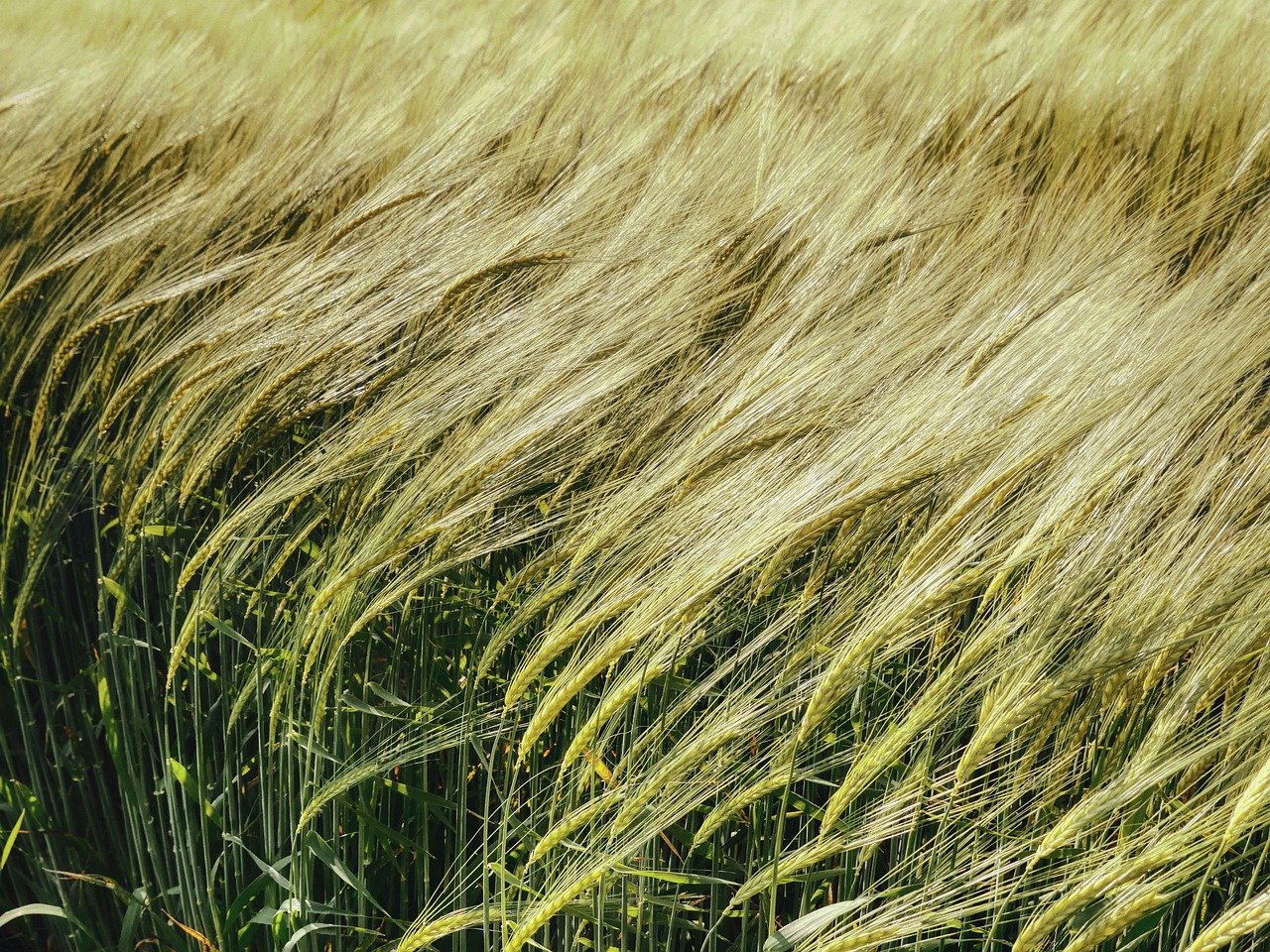
Biopesticides and Biofertilizers
In recent years, the agricultural landscape has witnessed a remarkable shift towards sustainable practices, and at the forefront of this revolution are biopesticides and biofertilizers. These innovative solutions are not just trends; they represent a profound change in how we approach farming. Unlike traditional chemical pesticides and fertilizers, biopesticides and biofertilizers are derived from natural materials, making them environmentally friendly alternatives that promote sustainability and biodiversity.
Biopesticides are typically made from natural organisms or substances that target specific pests without harming beneficial insects or the ecosystem. This targeted approach significantly reduces the chemical load on the environment and minimizes the risk of pesticide resistance. For instance, the use of Bacillus thuringiensis (Bt), a bacterium that produces proteins toxic to certain insects, has become a game-changer in pest management. By applying Bt, farmers can effectively control pest populations while preserving the health of their crops and surrounding wildlife.
Similarly, biofertilizers are natural substances that enhance soil fertility and promote plant growth. They often contain living microorganisms that help in the fixation of atmospheric nitrogen, solubilization of phosphorus, and degradation of organic matter. This not only improves soil health but also boosts crop productivity. For example, the application of mycorrhizal fungi as a biofertilizer can significantly increase root surface area, allowing plants to absorb more nutrients and water, which is crucial in times of drought.
As we delve deeper into the benefits of biopesticides and biofertilizers, it’s essential to highlight their role in improving soil health. Healthy soil is the foundation of sustainable agriculture. By using these natural products, farmers can replenish soil nutrients and enhance microbial activity, leading to improved soil structure and fertility. This cycle of rejuvenation not only supports current crop yields but also ensures that future generations can continue to farm sustainably.
Moreover, the adoption of biopesticides and biofertilizers aligns with global efforts to combat climate change. With rising concerns over the environmental impact of synthetic chemicals, these alternatives offer a viable pathway towards reducing carbon footprints in agriculture. They also contribute to food security by ensuring that crops can thrive in increasingly challenging conditions, such as those posed by climate change.
To illustrate the effectiveness of these innovations, let’s take a look at a comparative analysis of traditional versus biopesticide and biofertilizer usage:
| Aspect | Traditional Methods | Biopesticides & Biofertilizers |
|---|---|---|
| Environmental Impact | High chemical residue | Minimal impact, eco-friendly |
| Pest Resistance | High risk of resistance | Lower risk, targeted action |
| Soil Health | Degradation over time | Improves soil structure and fertility |
| Cost | Often higher in long-term | Cost-effective and sustainable |
In conclusion, the rise of biopesticides and biofertilizers marks a critical turning point in agricultural practices. By embracing these innovations, farmers not only enhance their crop yields but also contribute to a healthier planet. As we continue to explore sustainable farming methods, the integration of biopesticides and biofertilizers will undoubtedly play a pivotal role in shaping the future of agriculture.
- What are biopesticides? Biopesticides are natural substances used to control pests, derived from organisms like bacteria, fungi, and plants.
- How do biofertilizers work? Biofertilizers enhance soil fertility by introducing beneficial microorganisms that improve nutrient uptake for plants.
- Are biopesticides safe for the environment? Yes, biopesticides are designed to be eco-friendly, targeting specific pests without harming beneficial species.
- Can biopesticides and biofertilizers improve crop yield? Absolutely! They can enhance crop productivity while promoting sustainable farming practices.
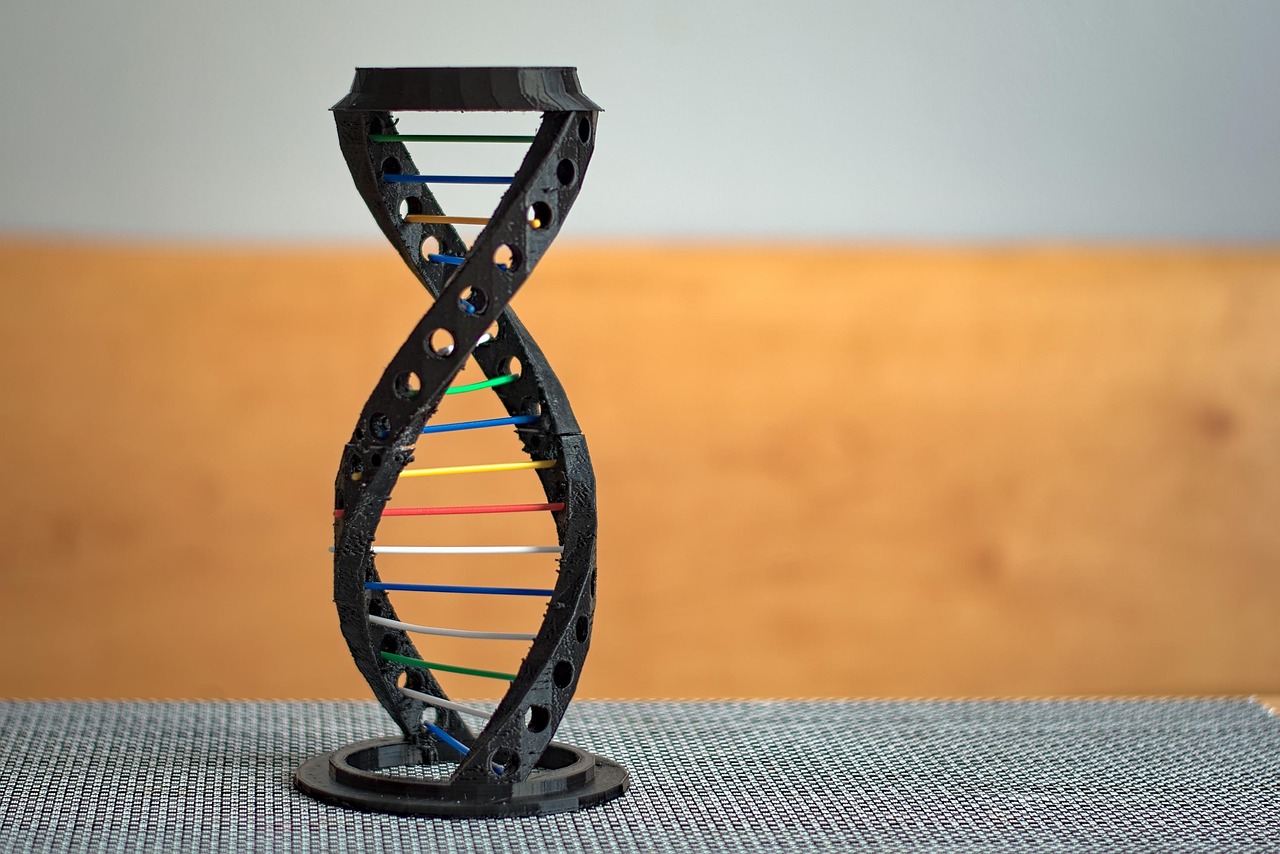
Crop Resistance to Diseases
In recent years, biotechnology has emerged as a game changer in the agricultural landscape, particularly in developing crops with enhanced resistance to diseases. Imagine a world where farmers can grow crops that stand tall against the onslaught of pests and pathogens, reducing their reliance on chemical treatments. This is not just a dream; it’s becoming a reality thanks to advancements in genetic engineering and biotechnology.
One of the most significant breakthroughs in this field is the development of genetically modified organisms (GMOs) that are specifically engineered to resist diseases. For instance, scientists have successfully introduced genes from naturally resistant plants into staple crops, creating varieties that can withstand specific diseases. This not only protects the crops but also contributes to higher yields and reduced losses, which is crucial for food security in a world with a growing population.
Consider the case of Bt cotton, which has been genetically modified to express a protein from the bacterium Bacillus thuringiensis. This protein acts as a natural pesticide, providing the cotton plant with the ability to fend off the notorious cotton bollworm. As a result, farmers who adopted Bt cotton reported significant reductions in pest damage and an increase in their overall harvest. This is just one example of how biotechnology is reshaping agriculture by providing tools to combat diseases effectively.
Furthermore, the benefits of disease-resistant crops extend beyond just the farmers. By reducing the need for chemical pesticides, these innovations contribute to a healthier ecosystem. Less chemical runoff means cleaner water sources and improved soil health, which are essential for sustainable farming practices. This ripple effect highlights the interconnectedness of agricultural practices and environmental health.
As we look to the future, the potential for developing even more resilient crop varieties is immense. Researchers are exploring gene editing technologies, such as CRISPR, to create crops that not only resist diseases but are also better equipped to handle the stresses of climate change. Imagine crops that can thrive in drought conditions or withstand flooding, all while maintaining their resistance to diseases. This is the future that biotechnology is paving the way for.
In summary, the advancements in biotechnology that enhance crop resistance to diseases are not just innovations; they are vital steps towards ensuring food security and sustainability. By embracing these technologies, we can build a more resilient agricultural system that benefits farmers, consumers, and the environment alike.
- What are disease-resistant crops? Disease-resistant crops are varieties that have been genetically modified or selectively bred to withstand specific pathogens and pests, reducing the need for chemical interventions.
- How do GMOs contribute to food security? GMOs can increase crop yields and reduce losses from diseases, which is essential for feeding a growing global population.
- Are disease-resistant crops safe for the environment? Yes, disease-resistant crops can lead to reduced pesticide use, which benefits the environment by minimizing chemical runoff and promoting healthier ecosystems.
- What is CRISPR and how does it relate to agriculture? CRISPR is a gene-editing technology that allows scientists to precisely alter the DNA of organisms, including crops, to enhance desirable traits such as disease resistance and drought tolerance.
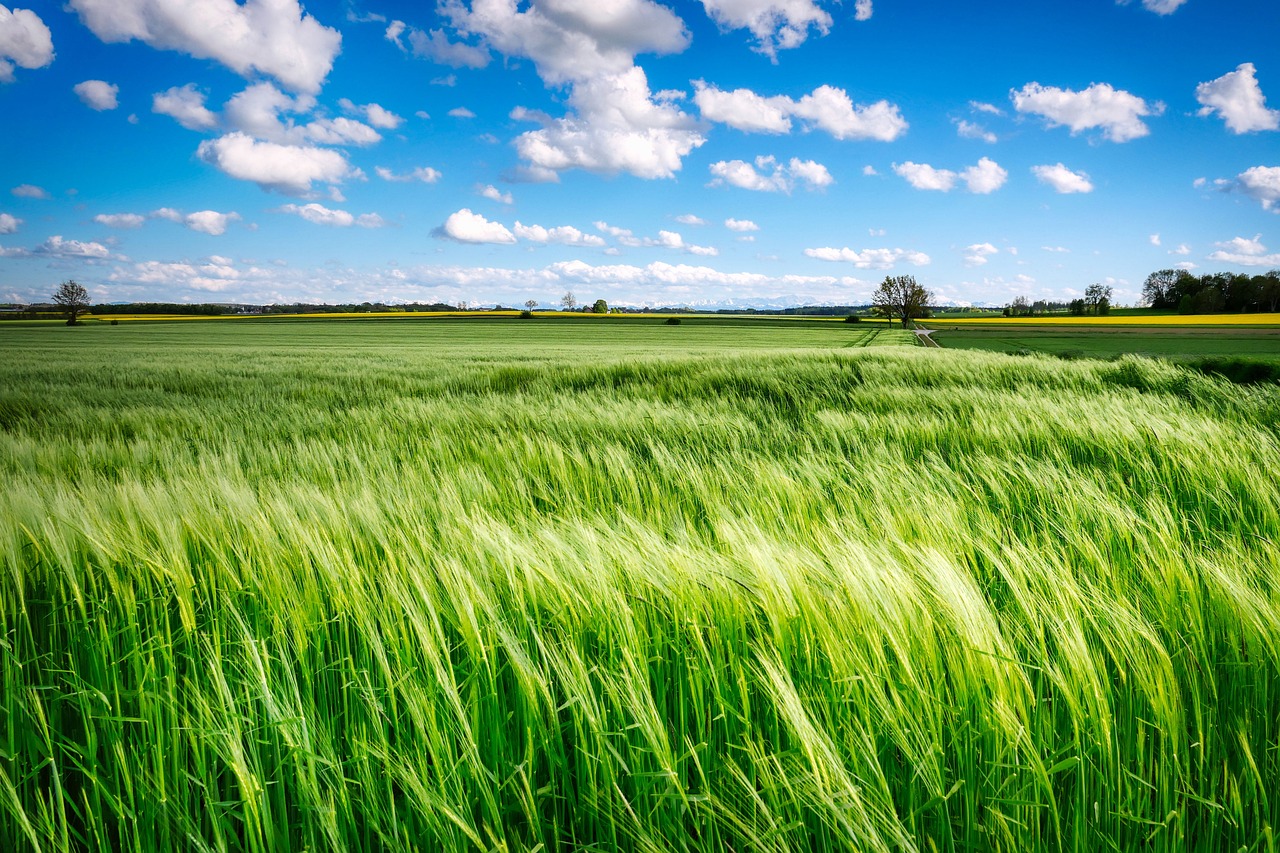
Case Studies of Successful Implementations
When we talk about the impact of biotechnology on agriculture, it's essential to look at real-world examples that illustrate this transformation. One of the most notable case studies comes from India, where the introduction of Bt cotton has significantly changed the landscape of cotton farming. This genetically modified crop was engineered to resist the infamous cotton bollworm, a pest that wreaked havoc on cotton yields. Farmers who adopted Bt cotton reported a staggering increase in yields—some as high as 30%—and a drastic reduction in pesticide use. This not only enhanced their profits but also contributed to a healthier environment.
Another compelling example is found in Brazil, where the development of disease-resistant papaya has helped save the industry from the devastating effects of the papaya ringspot virus. Before the introduction of genetically modified papaya, farmers faced severe crop losses, leading to economic challenges for many. However, with the introduction of this resilient variety, farmers have seen not only a resurgence in production but also a revitalization of their local economies. The success in Brazil serves as a testament to how biotechnology can address specific agricultural challenges and improve food security.
In Africa, the Orange-fleshed sweet potato has become a beacon of hope in the fight against malnutrition. This biofortified crop is enriched with vitamin A, addressing critical dietary deficiencies in regions where this nutrient is scarce. The implementation of this sweet potato variety has led to improved health outcomes, especially among children and pregnant women. By integrating biotechnology into traditional farming practices, communities have not only improved their nutrition but have also increased their resilience against food insecurity.
These case studies highlight the potential of biotechnology to revolutionize agriculture. They demonstrate that by leveraging scientific advancements, we can create crops that are not only more productive but also better suited to meet the challenges posed by pests, diseases, and nutritional deficiencies. As we look to the future, these successful implementations provide a roadmap for other regions to follow, showcasing the power of innovation in transforming agricultural practices.
- What is biotechnology in agriculture?
Biotechnology in agriculture refers to the use of scientific tools and techniques, including genetic engineering, to improve plants, animals, and microorganisms for agricultural purposes. - How do genetically modified organisms (GMOs) benefit farmers?
GMOs can provide benefits such as increased resistance to pests and diseases, improved crop yields, and reduced need for chemical pesticides, leading to lower production costs and higher profits. - Are biopesticides safe for the environment?
Yes, biopesticides are generally considered safer for the environment compared to conventional chemical pesticides, as they are derived from natural materials and typically have less harmful effects on non-target organisms. - What role does precision agriculture play in modern farming?
Precision agriculture uses technology and data analytics to optimize farming practices, allowing farmers to make informed decisions that enhance crop yields, reduce resource use, and improve sustainability.

Future Prospects for Disease Resistance
The future of disease resistance in crops is brimming with exciting possibilities, driven by rapid advancements in biotechnology. As researchers delve deeper into the genetic makeup of plants, the potential to create even more resilient crop varieties is becoming a reality. Imagine a world where farmers can cultivate crops that not only withstand diseases but also thrive in adverse conditions, such as extreme weather patterns and soil degradation. This vision is not as far-fetched as it may seem; it is a future that is being actively shaped by innovative biotechnological approaches.
One of the most promising avenues is the use of CRISPR technology, which allows for precise editing of plant genomes. By targeting specific genes associated with disease susceptibility, scientists can enhance a crop's natural defenses without introducing foreign DNA. This method not only speeds up the development of resistant varieties but also addresses some of the public concerns surrounding traditional genetic modification. The ability to tailor crops to specific environmental challenges means that farmers can adapt to changing climate conditions more effectively.
Furthermore, as we witness the rise of integrated pest management (IPM) strategies, the role of biotechnology will be pivotal. By combining disease-resistant crops with biological control methods, such as beneficial insects and microbial agents, farmers can reduce their reliance on chemical pesticides. This holistic approach not only preserves the ecosystem but also ensures the long-term sustainability of agriculture. The synergy between biotechnology and IPM could lead to a significant reduction in crop losses due to diseases, ultimately enhancing food security.
Another exciting prospect is the development of crops with multi-trait resistance. These crops are engineered to resist a range of diseases and pests simultaneously, making them more robust in the face of various agricultural challenges. For instance, researchers are working on varieties that can resist both fungal infections and insect infestations, which could drastically reduce the need for chemical treatments. This multi-faceted approach not only improves yield but also minimizes the environmental footprint of farming practices.
In addition to these advancements, the global collaboration among scientists, agriculturalists, and policymakers is crucial. By sharing knowledge and resources, countries can collectively tackle the challenges posed by plant diseases. International partnerships can facilitate research and development, ensuring that breakthroughs in disease resistance are accessible to farmers worldwide, especially in regions that are most vulnerable to food insecurity.
As we look ahead, the integration of artificial intelligence (AI) and machine learning into agricultural practices will further enhance our ability to predict and manage plant diseases. These technologies can analyze vast amounts of data from various sources, identifying patterns that may indicate disease outbreaks. By equipping farmers with predictive tools, they can take proactive measures to protect their crops, ultimately leading to healthier harvests and reduced losses.
In conclusion, the future prospects for disease resistance in crops are incredibly promising. With ongoing research, innovative technologies, and collaborative efforts, we are on the brink of a new era in agriculture. As we embrace these advancements, we can look forward to a more resilient food system that not only meets the demands of a growing population but also protects our planet for generations to come.
- What are genetically modified organisms (GMOs)? GMOs are organisms whose genetic material has been altered using genetic engineering techniques, often to exhibit traits like pest resistance or improved nutritional content.
- How does CRISPR technology work in agriculture? CRISPR technology allows scientists to make precise edits to the DNA of plants, enabling them to enhance disease resistance and other desirable traits without introducing foreign DNA.
- What is integrated pest management (IPM)? IPM is a holistic approach to managing pests that combines biological control methods with resistant crop varieties to minimize the use of chemical pesticides.
- How can AI help in agriculture? AI can analyze data to predict disease outbreaks and optimize farming practices, allowing farmers to make informed decisions and improve crop yields.
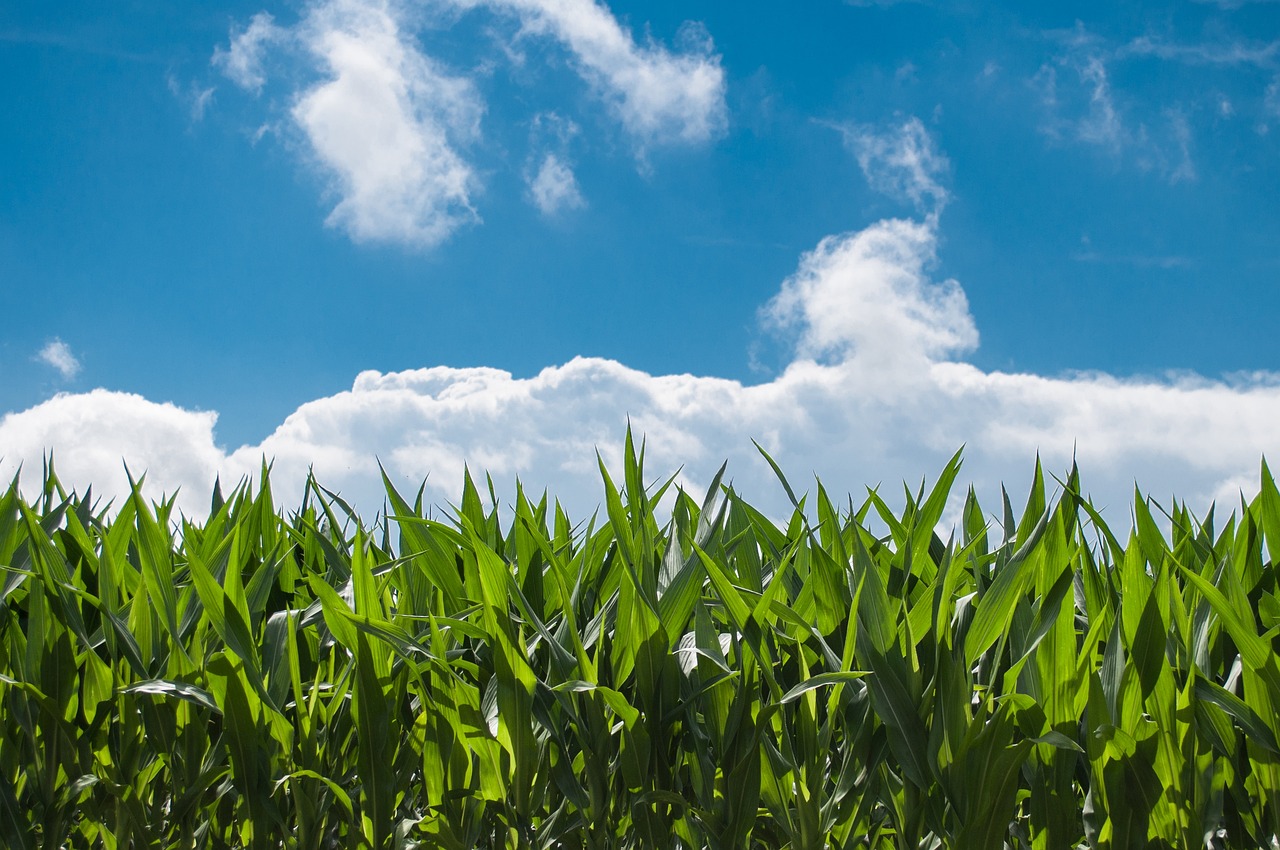
Enhancing Nutritional Value
Biotechnology is making waves in the agricultural sector, especially when it comes to enhancing the nutritional value of crops. Imagine a world where staple foods not only fill your stomach but also provide essential vitamins and minerals that help fight malnutrition. This is not just a dream; it's becoming a reality thanks to innovative biotechnological practices. By manipulating the genetic makeup of crops, scientists are able to increase the levels of vital nutrients, effectively transforming ordinary grains and vegetables into nutritional powerhouses.
For instance, consider the case of Golden Rice, a genetically modified variety designed to produce higher levels of Vitamin A. This rice has been specifically engineered to combat Vitamin A deficiency, which affects millions of people globally, particularly in developing countries. By incorporating beta-carotene, the precursor to Vitamin A, Golden Rice serves as a beacon of hope for communities where traditional dietary sources of this nutrient are scarce. Such advancements not only contribute to better health outcomes but also pave the way for a more resilient food system.
Moreover, biotechnology enables the fortification of crops with essential minerals such as iron and zinc. These micronutrients play a crucial role in overall health, and their deficiency can lead to serious health issues, including stunted growth in children and weakened immune systems. Through genetic engineering, crops like beans and cassava are being enhanced to contain higher levels of these minerals, thus addressing nutritional deficiencies directly at the source. This approach is akin to planting a seed of hope that grows into a tree of health for future generations.
To illustrate the impact, let’s take a look at a comparison of conventional crops versus their biofortified counterparts in terms of nutritional content:
| Crop Type | Vitamin A (mg per 100g) | Iron (mg per 100g) | Zinc (mg per 100g) |
|---|---|---|---|
| Conventional Rice | 0 | 0.2 | 0.4 |
| Golden Rice | 1.6 | 0.3 | 0.5 |
| Conventional Beans | 0 | 2.5 | 0.7 |
| Biofortified Beans | 0 | 4.0 | 1.2 |
This table clearly shows the enhanced nutritional profiles of biofortified crops compared to their conventional counterparts. The increase in essential vitamins and minerals can have a profound impact on public health, especially in regions where malnutrition is prevalent.
In conclusion, the role of biotechnology in enhancing the nutritional value of crops is not just a scientific advancement; it's a crucial step towards achieving global food security and improving health outcomes. As we continue to explore and implement these biotechnological innovations, we are not only feeding the world but also nourishing it in a way that promotes a healthier future for all.
- What is biofortification? Biofortification is the process of increasing the nutritional value of crops through biotechnological methods, making them richer in essential vitamins and minerals.
- How does biotechnology enhance crop nutrition? Biotechnology enhances crop nutrition by modifying the genetic makeup of plants to increase the levels of specific nutrients, such as vitamins and minerals.
- Are biofortified crops safe to eat? Yes, biofortified crops are thoroughly tested for safety and efficacy before they are released for public consumption.
- What are some examples of biofortified crops? Examples include Golden Rice (rich in Vitamin A) and biofortified beans (higher in iron and zinc).
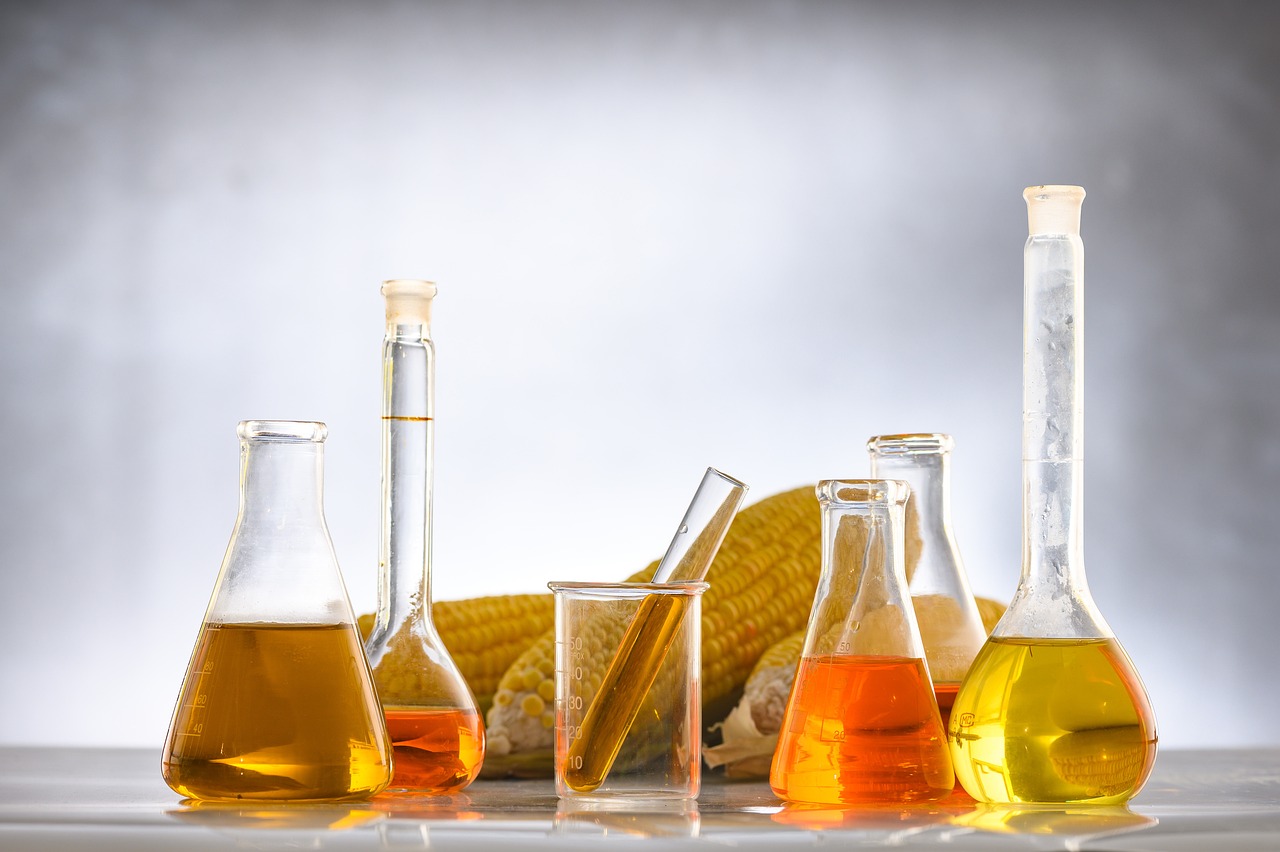
Precision Agriculture Technologies
In today’s fast-paced world, are making waves, transforming how we approach farming. Imagine a farmer armed with data that reveals the exact needs of their crops, enabling them to apply water, fertilizers, and pesticides with pinpoint accuracy. This is not just a dream—it's a reality thanks to the integration of biotechnology with cutting-edge technologies such as data analytics and the Internet of Things (IoT).
At the heart of precision agriculture is the ability to gather and analyze vast amounts of data. Farmers can now utilize satellite imagery, drone technology, and soil sensors to monitor crop health, soil conditions, and weather patterns in real-time. This data-driven approach allows them to make informed decisions that enhance productivity while minimizing waste. For instance, by understanding the moisture levels in the soil, farmers can optimize irrigation schedules, ensuring that their crops receive just the right amount of water without over-irrigating.
This technology doesn't just stop at improving yields; it also plays a crucial role in resource management. By employing precision agriculture techniques, farmers can significantly reduce their environmental footprint. For example, a study showed that farms utilizing precision agriculture reduced water usage by up to 30%, while also cutting down on chemical applications. This reduction is a win-win, as it leads to healthier crops and a healthier planet.
But how exactly does this work? Let's break it down:
- Data Collection: Sensors and drones collect data on crop health, soil moisture, and nutrient levels.
- Data Analysis: Advanced analytics process this data to provide actionable insights.
- Targeted Interventions: Farmers can apply resources only where needed, optimizing inputs and maximizing outputs.
Moreover, precision agriculture technologies are paving the way for sustainable farming practices. By minimizing chemical runoff and reducing the need for fertilizers, these innovations not only boost productivity but also protect our water systems and biodiversity. This is crucial, especially in areas where agriculture is a primary livelihood and environmental degradation poses a significant threat.
As we look to the future, the potential for precision agriculture technologies seems limitless. With advancements in artificial intelligence and machine learning, farmers will be able to predict crop performance and identify potential issues before they become critical. This proactive approach will not only enhance food security but also ensure that agriculture can adapt to the challenges posed by climate change.
In conclusion, precision agriculture technologies are revolutionizing the agricultural landscape, providing farmers with the tools they need to make smarter decisions, conserve resources, and produce food more sustainably. As these technologies continue to evolve, they hold the key to a more efficient and environmentally friendly future for agriculture.
- What is precision agriculture? Precision agriculture is a farming management concept that uses technology and data to monitor and optimize field variability in crops.
- How does biotechnology contribute to precision agriculture? Biotechnology aids in developing crop varieties that can better utilize the data and resources provided by precision agriculture technologies.
- What are the benefits of using precision agriculture? Benefits include increased crop yields, reduced resource usage, improved sustainability, and enhanced food security.
- Can precision agriculture help combat climate change? Yes, by optimizing resource use and reducing waste, precision agriculture can significantly lower the carbon footprint of farming practices.
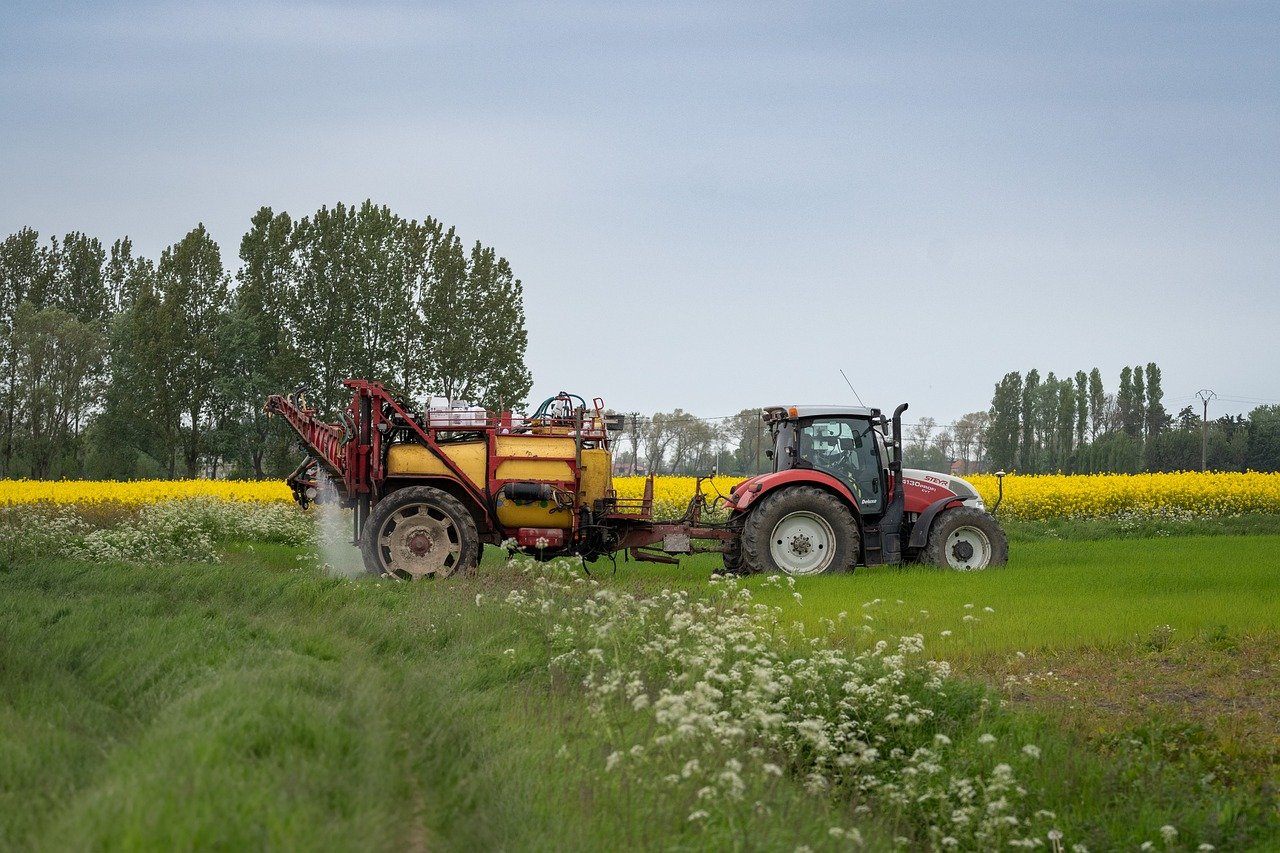
Data-Driven Decision Making
In the ever-evolving field of agriculture, is becoming a game-changer for farmers around the globe. Imagine being able to predict the best time to plant your crops or knowing precisely how much water each plant needs, all thanks to the power of data analytics. This isn’t just a dream; it’s a reality made possible by advancements in biotechnology and information technology.
Farmers are now equipped with sophisticated tools that collect and analyze data from various sources, including satellite imagery, soil sensors, and weather forecasts. These technologies provide insights that allow farmers to make informed decisions that can lead to increased yields and reduced costs. For instance, using data analytics, a farmer can determine the optimal planting density for a specific crop variety, which can significantly impact productivity.
Moreover, data-driven decision making helps in resource optimization. By analyzing data on soil moisture levels, farmers can adjust their irrigation practices, ensuring that crops receive just the right amount of water. This not only conserves water but also enhances crop resilience against drought conditions. In fact, studies have shown that farms utilizing precision irrigation techniques can reduce water usage by up to 30% while maintaining or even increasing crop yields.
To illustrate the impact of data-driven decision making, consider the following table that showcases the benefits of utilizing data analytics in agriculture:
| Benefit | Description |
|---|---|
| Increased Efficiency | Farmers can optimize inputs such as seeds, fertilizers, and water, leading to cost savings. |
| Enhanced Crop Yields | Data insights allow for better management practices, resulting in higher productivity. |
| Environmental Sustainability | By minimizing chemical usage and conserving resources, farmers can adopt more sustainable practices. |
| Risk Management | Farmers can anticipate and mitigate risks related to weather events, pests, and diseases. |
Furthermore, the integration of IoT (Internet of Things) devices into farming practices has made it easier for farmers to gather real-time data. These devices can monitor everything from soil pH levels to crop health, sending alerts to farmers when immediate action is required. This level of responsiveness can make a significant difference in the overall health of the crops and the efficiency of farming operations.
In conclusion, is not just a trend; it’s a fundamental shift in how agriculture is practiced. As farmers embrace these technologies, they are not only improving their own operations but also contributing to a more sustainable and secure food system for the future. The potential for growth and innovation in agriculture is vast, and those who harness the power of data will undoubtedly lead the way in this agricultural revolution.
- What is data-driven decision making in agriculture? - It refers to the process of using data analytics to inform and optimize farming practices.
- How can data analytics improve crop yields? - By providing insights that help farmers make informed decisions regarding planting, watering, and fertilizing crops.
- What technologies are involved in data-driven agriculture? - Technologies include satellite imagery, soil sensors, IoT devices, and data analytics software.
- Is data-driven farming sustainable? - Yes, it promotes resource conservation and reduces environmental impact.
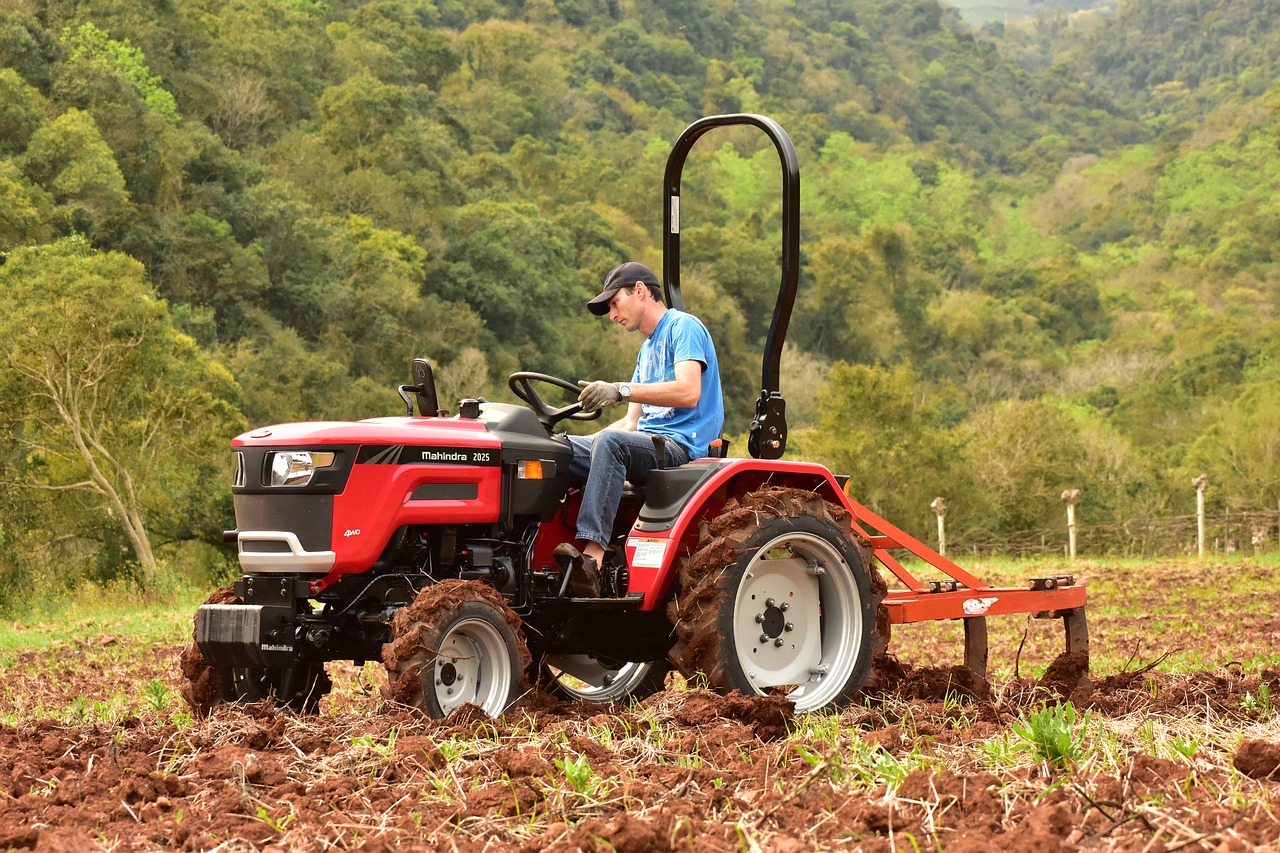
Impact on Resource Management
In the ever-evolving landscape of agriculture, the integration of biotechnology with precision agriculture is proving to be a game-changer for resource management. Imagine a world where farmers can precisely monitor their fields, knowing exactly how much water, nutrients, and pesticides are needed for optimal crop growth. This is not just a dream; it's becoming a reality thanks to advanced technologies that leverage data analytics and the Internet of Things (IoT).
One of the most significant impacts of this integration is the reduction in water usage. Traditional farming methods often lead to over-irrigation, which not only wastes water but can also lead to soil erosion and nutrient runoff. However, with the help of biotechnology, farmers can now use sensors and data-driven insights to determine the exact moisture levels in their soil. This allows them to irrigate only when necessary, conserving precious water resources and promoting healthier crops.
Moreover, biotechnology enables farmers to minimize chemical applications, which is crucial for both environmental sustainability and human health. By utilizing biopesticides and biofertilizers, farmers can effectively manage pests and enhance soil fertility without relying on harmful chemicals. This shift not only improves the quality of the produce but also reduces the risk of chemical runoff into nearby water bodies, protecting ecosystems and biodiversity.
To illustrate the impact of these innovations, consider the following table that summarizes the benefits of integrating biotechnology with precision agriculture:
| Resource | Traditional Farming | Biotechnology & Precision Agriculture |
|---|---|---|
| Water Usage | High | Reduced by up to 30% |
| Chemical Application | Excessive | Minimized use of harmful chemicals |
| Soil Health | Degraded due to over-fertilization | Enhanced through biofertilizers |
| Crop Yield | Variable | Consistently higher with precision interventions |
As we can see, the shift towards biotechnology and precision agriculture not only enhances crop yields but also fosters sustainable practices that benefit the environment. Farmers are now empowered to make informed decisions based on real-time data, leading to more efficient resource management. This is akin to having a personal coach who guides you through every step of your farming journey, ensuring that you're not just working harder but also smarter.
The future of agriculture looks promising, as ongoing research continues to uncover new ways to optimize resource use. With the challenges posed by climate change and a growing global population, these innovations are not just beneficial; they are essential for sustainable food production. It's an exciting time to be involved in agriculture, where technology and nature work hand in hand to create a more resilient and productive farming system.
- What is biotechnology in agriculture? Biotechnology in agriculture refers to the use of scientific techniques, including genetic engineering, to improve plants, animals, and microorganisms for agricultural purposes.
- How does precision agriculture work? Precision agriculture uses technology such as GPS, sensors, and data analytics to monitor and manage field variability in crops, optimizing inputs like water and fertilizers.
- What are biopesticides? Biopesticides are natural substances used to control pests and diseases in crops, offering an eco-friendly alternative to synthetic pesticides.
- Can biotechnology help with food security? Yes, by enhancing crop resilience, improving yields, and ensuring better nutritional content, biotechnology plays a crucial role in addressing food security challenges.
Frequently Asked Questions
- What is biotechnology in agriculture?
Biotechnology in agriculture refers to the use of scientific tools and techniques, including genetic engineering, to improve plants, animals, and microorganisms. It aims to enhance crop yields, resistance to pests and diseases, and nutritional quality, ultimately contributing to food security and sustainable farming practices.
- How do genetically modified organisms (GMOs) benefit agriculture?
GMOs offer several benefits, such as increased resistance to pests and diseases, improved drought tolerance, and enhanced nutritional content. These traits can lead to higher crop yields and reduced reliance on chemical pesticides, making farming more sustainable and efficient.
- What are biopesticides and biofertilizers?
Biopesticides are natural substances used to control pests, while biofertilizers enhance soil fertility using living microorganisms. Both are eco-friendly alternatives to traditional chemical pesticides and fertilizers, promoting sustainable agriculture and reducing environmental impact.
- Can biotechnology help combat malnutrition?
Absolutely! Biotechnology is used to enhance the nutritional profiles of staple crops, increasing essential vitamins and minerals. This can significantly address malnutrition and improve health outcomes in vulnerable populations.
- What is precision agriculture?
Precision agriculture is an innovative farming approach that utilizes data analytics, IoT, and biotechnology to optimize farming practices. It allows farmers to make informed decisions based on real-time data, improving resource management and crop yields.
- How does biotechnology impact resource management in farming?
Biotechnology enhances resource management by enabling practices that reduce water usage, minimize chemical applications, and improve soil health. This leads to more sustainable farming practices that are crucial in the face of climate change and resource scarcity.
- What are the future prospects of biotechnology in agriculture?
The future of biotechnology in agriculture looks promising, with ongoing research aimed at developing even more resilient crop varieties and innovative farming techniques. This advancement will play a critical role in ensuring food security and sustainability for future generations.

